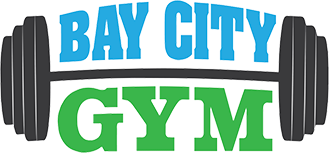Article provided by Chrissy Newall – Owner/Operator
Strength training is a valuable complement to running that can help improve your performance and reduce the risk of injury. Strengthening the major muscles that surround the hips, lower back and core will help your stability, strength and power. Working on muscles that enhance your balance and posture will also help your technique and improve your running gait.
So whether you want to improve your endurance, pace or running efficiency, the following exercises are some of the best strength training exercises to enhance your running:
- Squats: Squats are a compound exercise that strengthens the quadriceps, hamstrings, glutes, and lower back. They help improve leg strength, stability, and power, which are essential for running.
- Lunges: Lunges work the same muscle groups as squats and also help develop balance and coordination. You can perform forward, reverse, or lateral lunges to target different aspects of your leg muscles.
- Deadlifts: Deadlifts target the glutes, hamstrings, lower back, and core. They help improve hip extension, which is crucial for a powerful running stride.
- Step-Ups: Step-ups are excellent for building leg strength and mimicking the motion of running. Use a bench or box to step up and down while focusing on driving through your heel.
- Calf Raises: Strong calf muscles are important for push-off and maintaining a stable footstrike. You can do calf raises with both legs or single-leg calf raises.
- Bridges: Bridges strengthen the glutes and lower back while improving hip stability. They can help correct muscle imbalances and contribute to better running form.
- Planks: Planks are a fantastic core-strengthening exercise that improves stability and posture, both of which are important for maintaining proper running form.
- Russian Twists: This exercise targets the oblique muscles and helps with core rotation, which can enhance your ability to generate power and maintain balance while running.
- Medicine Ball Exercises: Using a medicine ball for exercises like woodchops or overhead throws can improve core strength, rotational power, and stability.
- Kettlebell Swings: Kettlebell swings are a dynamic exercise that works the entire posterior chain, including the glutes, hamstrings, and lower back. They can help increase running power and efficiency.
- Resistance Bands: Incorporate resistance band exercises for leg abduction, adduction, and lateral walks to improve hip and glute strength and stability.
- Balance and Stability Exercises: Incorporate exercises that challenge your balance, such as single-leg stands or stability ball exercises. Improved balance can lead to more efficient running.
- Plyometric Exercises: Exercises like box jumps, squat jumps, and bounding can help develop explosive power and coordination, which can be valuable for sprinting and improving your stride length.
- Single-Leg Exercises: Work on single-leg exercises like single-leg squats, step-ups, and deadlifts to address muscle imbalances and enhance running stability and strength.
When incorporating strength training into your running routine, it’s important to maintain a balance between your running and strength workouts. Aim for 2-3 days of strength training per week and ensure that you are recovering adequately between workouts. If you’re new to strength training, consider working with a fitness professional or coach to develop a program tailored to your specific running goals and needs. Proper form and technique are essential to prevent injuries and get the most benefit from your strength training.


